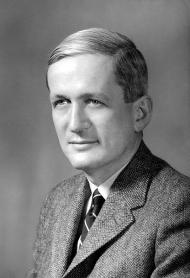Mariner 2 (Mariner-Venus 1962), was the first robotic space probe to conduct a successful planetary encounter. The first successful spacecraft in the NASA Mariner program, it was a simplified version of the Block I spacecraft of the Ranger program and an exact copy of Mariner 1. The missions of Mariner 1 and 2 spacecraft are together sometimes known as the Mariner R missions. Mariner 2 passed within 35,000 kilometres (22,000 mi) of Venus on December 14, 1962.
The Mariner probe consisted of a 100 cm (39.4 in) diameter hexagonal bus, to which solar panels, instrument booms, and antennas were attached. The scientific instruments on board the Mariner spacecraft were two radiometers (one each for the microwave and infrared portions of the spectrum), a micrometeorite sensor, a solar plasma sensor, a charged particle sensor, and a magnetometer. These instruments were designed to measure the temperature distribution on the surface of Venus, as well as making basic measurements of Venus' atmosphere. Due to the planet's thick, featureless cloud cover, no cameras were included in the Mariner unit. Mariner 10 later discovered that extensive cloud detail was visible in ultraviolet light.
The primary mission was to receive communications from the spacecraft in the vicinity of Venus and to perform radiometric temperature measurements of the planet. A second objective was to measure the Interplanetary Magnetic Field and charged particle environment.
The two-stage Atlas-Agena rocket carrying Mariner 1 had veered off-course during its launch on July 22, 1962 due to a defective signal from the Atlas and a bug in the program equations of the ground-based guiding computer, and subsequently the spacecraft was destroyed by the Range Safety Officer. A month later, the identical Mariner 2 spacecraft was launched successfully on August 27, 1962, sending it on a 3½-month flight to Venus. On the way, it measured the solar wind, a constant stream of charged particles flowing outwards from the Sun, confirming the measurements by Luna 1 in 1959. It also measured interplanetary dust, which turned out to be scarcer than predicted. In addition, Mariner 2 detected high-energy charged particles coming from the Sun, including several brief solar flares, as well as cosmic rays from outside the Solar System. As it flew by Venus on December 14, 1962, Mariner 2 scanned the planet with its pair of radiometers, revealing that Venus has cool clouds and an extremely hot surface.
The spacecraft is now defunct in a heliocentric orbit.

